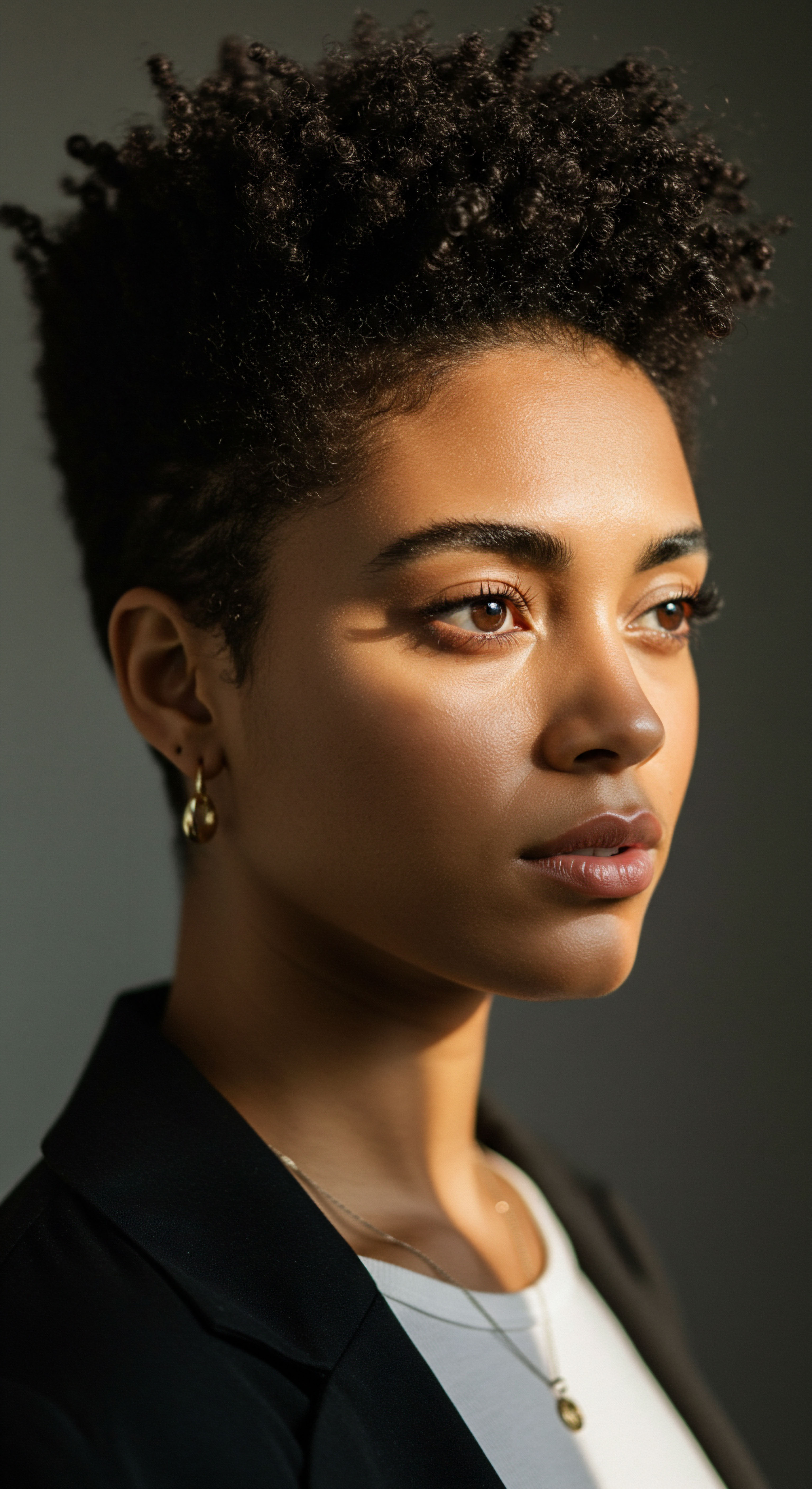
Roots
The quiet hum of curiosity often leads us to ponder the origins of things we now consider commonplace. With hair, a living crown, its adornment holds a particular resonance, reaching back through forgotten eras and distant lands. When we consider hair extensions, a modern fixture in beauty routines, a deeper look reveals their presence long before the advent of contemporary styling salons. These additions to one’s natural hair were not merely about fleeting trends or superficial appeal; they were deeply rooted in the practical needs and profound cultural expressions of societies across time.
Long before the shimmering strands of today’s offerings, early communities discovered the inherent versatility of supplemental hair. They learned to work with available materials, whether animal fibers or human hair, to achieve effects that went beyond simple prettiness. These early forms of hair enhancement served a dual purpose, acting as both a shield against the elements and a visual marker of identity, status, or spiritual connection. To truly grasp the role of extensions, one must first step back into the ancient world, where the sun beat down relentlessly and social structures were clearly defined by outward appearance.

Ancient Origins of Hair Adornment
The earliest documented instances of hair extensions trace back to ancient Egypt, around 3400 BCE. Here, both men and women wore wigs and hairpieces, often crafted from human hair, plant fibers, or even sheep’s wool. These were secured with natural adhesives like beeswax and resin. The Egyptians, with their deep appreciation for hygiene and presentation, utilized these enhancements not only for aesthetic reasons but also for practical benefits.
They provided protection from the intense desert sun, shielding the scalp from harsh rays. Furthermore, they served as a hygienic measure, helping to deter lice and other pests in a time before modern sanitation was widespread. The elaborate styles and vibrant colors, such as Cleopatra’s famously blue extensions, also denoted age, religion, and social rank, making them a powerful non-verbal language.
Beyond Egypt, the practice spread. Ancient Romans and Greeks adopted hair extensions, incorporating them into their intricate hairstyles. Roman women, in particular, favored voluminous looks, often using hairpieces to achieve height and fullness. These additions were frequently made from human hair, and the Romans became adept at the methods of attachment.
Similarly, in ancient Greece, women used extensions to enhance their natural locks, often adorning them with flowers and other accessories. These early uses highlight a consistent human desire to modify and enhance hair, driven by a combination of practical needs and social signaling.
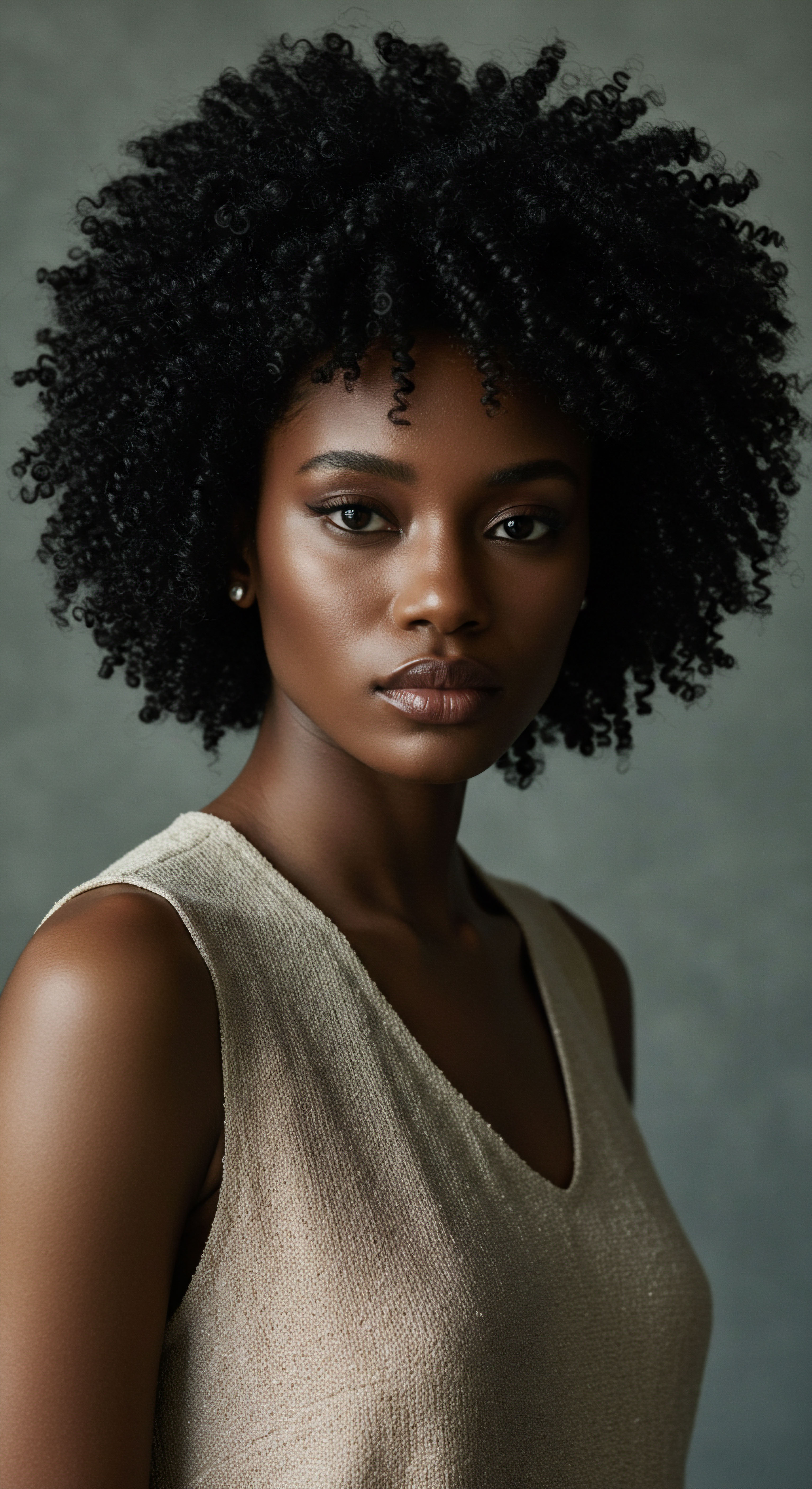
Hair as a Social and Cultural Indicator
Across various civilizations, hair has consistently functioned as a profound indicator of social standing, marital status, age, and even tribal affiliation. In many African cultures, intricate hairstyles and the incorporation of extensions were not merely decorative. They communicated complex narratives about an individual’s place within their community. For instance, specific braiding patterns or the way hairpieces were styled could signify a woman’s readiness for marriage, her lineage, or her spiritual role.
This historical context underscores that hair extensions, from their earliest manifestations, were rarely singular in their purpose. They were interwoven with daily life, offering protection from environmental challenges while simultaneously serving as a canvas for identity and social expression. The materials used, the methods of attachment, and the resulting styles were all deliberate choices, reflecting a sophisticated understanding of hair’s capacity to communicate.
Hair extensions, far from being a recent aesthetic trend, possess deep historical roots, serving both protective functions and profound social roles across ancient civilizations.
The evolution of hair adornment, including the use of extensions, is a testament to human ingenuity and the enduring significance of hair. It speaks to a shared human experience of adapting to surroundings, expressing identity, and communicating through visual cues. The foundational role of extensions, therefore, reaches back to a time when survival and social cohesion were paramount, and every element of appearance carried meaning.

Ritual
Stepping from the quiet whispers of ancient history into the more active realm of daily practice, we find that hair extensions continue to hold a significant place in the rituals of self-care and styling. The decision to incorporate supplemental hair into one’s routine often extends beyond a simple desire for a different look. It can be a conscious choice for hair wellness, a practical solution to everyday challenges, or a means of preserving the natural strands beneath. This section invites us to consider the hands-on aspects of extensions, exploring how they are used, cared for, and how they contribute to a more mindful approach to hair.
The methods of attaching and maintaining extensions have evolved dramatically over centuries, moving from rudimentary applications to sophisticated techniques designed to blend seamlessly and offer comfort. This progress reflects a growing understanding of hair science and a collective desire for hair solutions that support, rather than hinder, natural hair health.
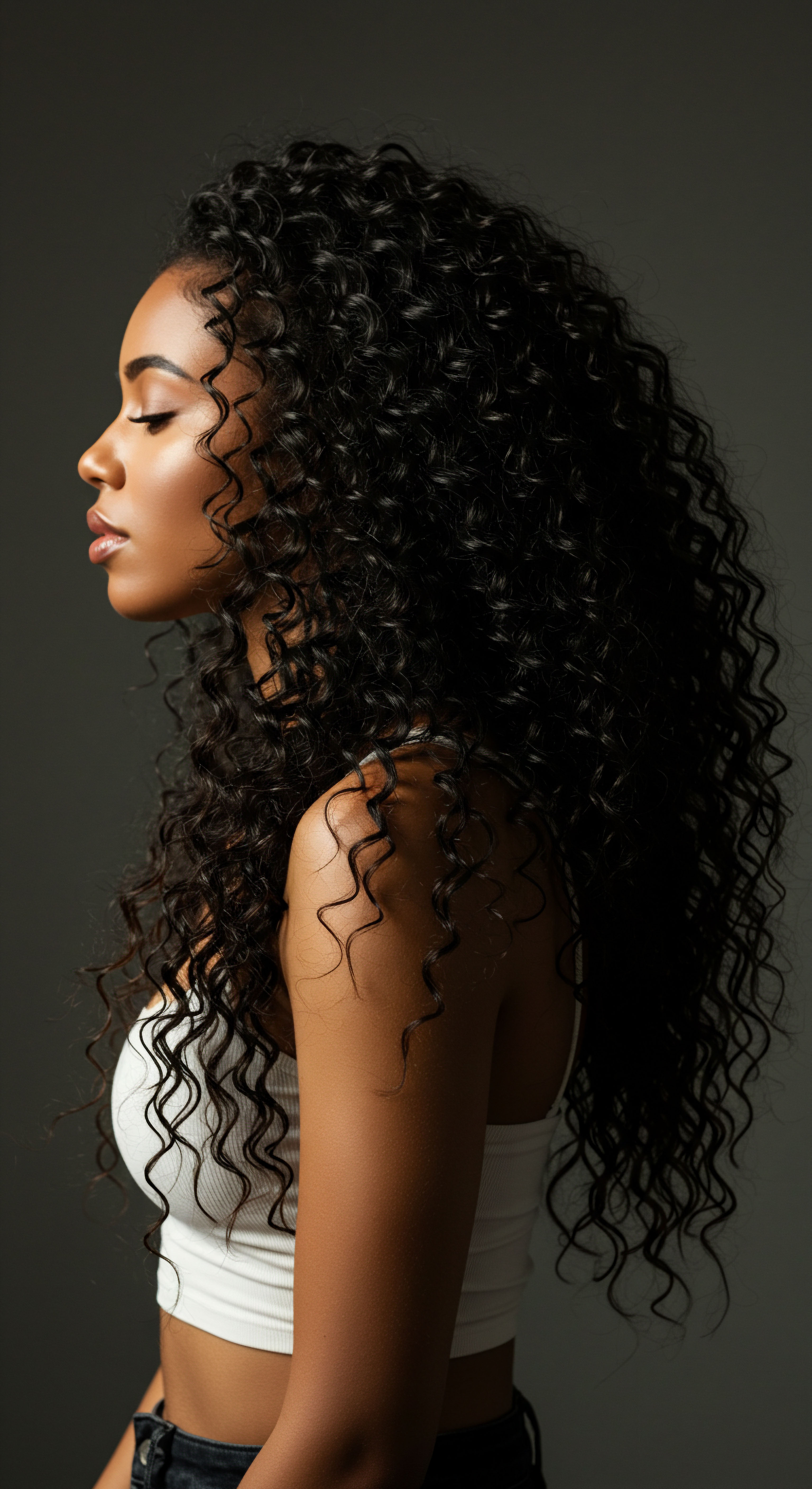
Do Hair Extensions Help Hair Growth?
A common inquiry surrounds the relationship between extensions and natural hair growth. While extensions themselves do not directly stimulate growth, as hair growth originates from follicles within the scalp, they can certainly create an environment conducive to length retention. By encasing natural hair, extensions act as a protective shield, minimizing exposure to daily manipulation, environmental stressors, and heat styling. This reduced interference can lead to less breakage, allowing the natural hair to grow longer and stronger over time.
Consider the routine of many individuals with textured hair, where daily styling can involve significant manipulation, leading to potential breakage. Extensions, particularly in the form of protective styles like braids, twists, or sew-ins, offer a reprieve. They allow the natural hair to rest, minimizing tension from styling tools and exposure to harsh elements. This concept of “protective styling” is a cornerstone of many textured hair care regimens, with extensions serving as a valuable tool.

Protective Styling Techniques
The practice of protective styling, often enhanced by extensions, offers a range of benefits for hair health. These styles aim to limit external damage and manipulation, thereby supporting the hair’s natural growth cycle.
- Braids ❉ Whether cornrows, box braids, or Senegalese twists, extensions can be incorporated to add length, volume, and durability to these styles. This keeps natural hair tucked away, safeguarding it from daily wear and tear.
- Wigs ❉ Wigs, a form of extension, offer complete coverage, allowing natural hair to be braided down and completely protected underneath. This provides a versatile option for changing looks without direct manipulation of one’s own hair.
- Sew-Ins ❉ Natural hair is braided into cornrows, and extension wefts are then sewn onto these braids. This method provides a secure attachment that keeps the natural hair concealed and protected for extended periods.
Such methods provide an opportunity for natural hair to retain moisture and grow without constant interference, which can be particularly beneficial for hair types prone to dryness or breakage.
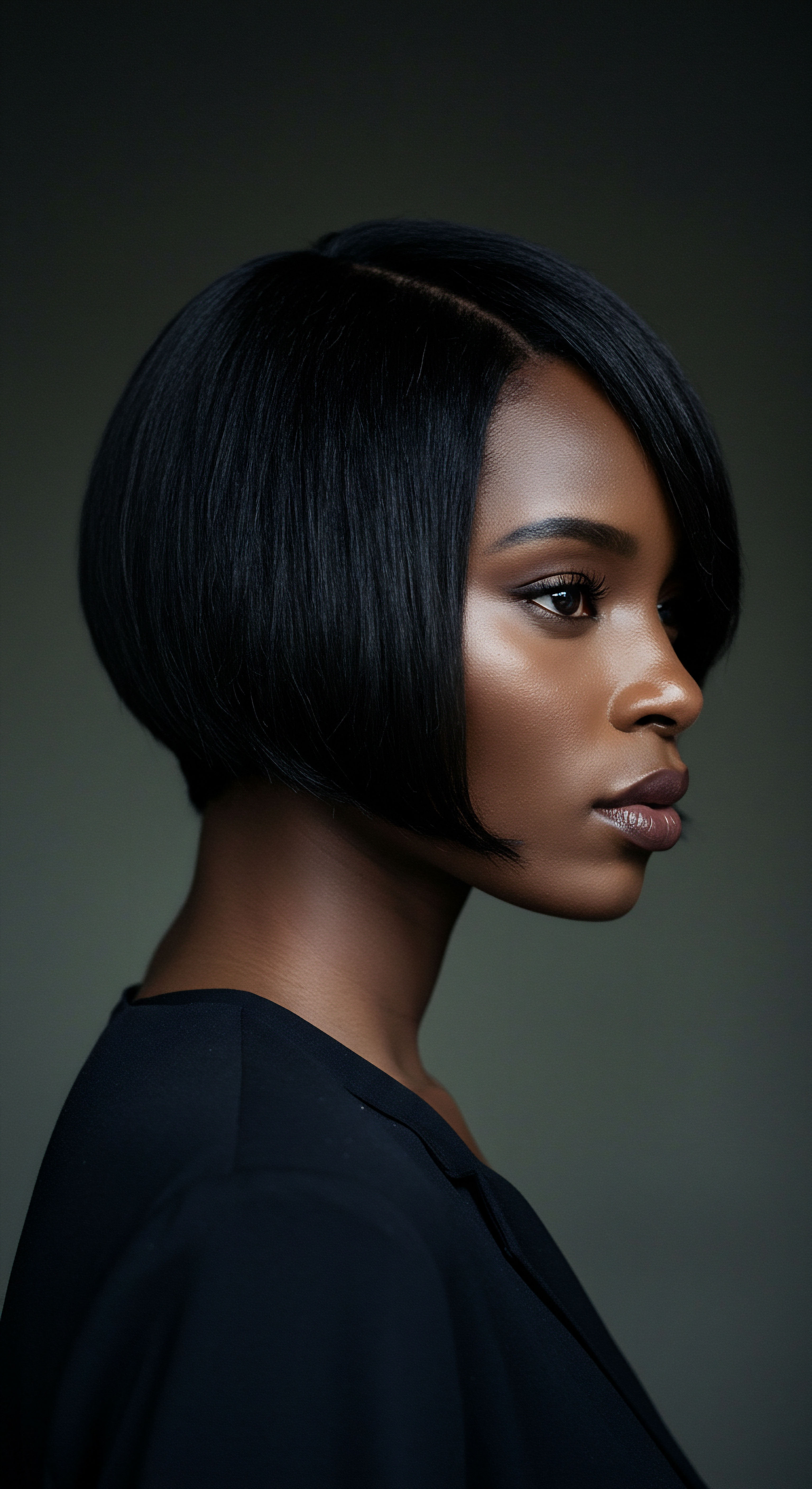
Maintaining Scalp Health with Extensions
While extensions offer protective benefits, maintaining scalp health remains paramount. An unhealthy scalp can undermine any potential gains from protective styling. It is important to remember that the scalp is skin, and it requires careful attention.
Proper cleansing is a cornerstone of scalp wellness with extensions. Using gentle, sulfate-free shampoos and thoroughly rinsing to avoid product buildup is crucial. Buildup can lead to irritation, dryness, or even fungal issues if not addressed. Regular, gentle scalp massages can also stimulate blood circulation, which supports hair follicles and overall scalp health.
Extensions can serve as a shield for natural hair, promoting length retention by reducing daily manipulation and environmental exposure.
Choosing the right type of extension and ensuring professional installation also plays a significant role in preventing undue tension on the hair follicles, which could lead to issues like traction alopecia. Lightweight options and proper weight distribution are key considerations.
| Extension Type Clip-in Extensions |
| Application Method Clips attach to small sections of natural hair. |
| Scalp Impact Considerations Minimal, as they are temporary and removed daily. Less risk of tension if not worn for extended periods. |
| Extension Type Tape-in Extensions |
| Application Method Adhesive strips sandwich natural hair. |
| Scalp Impact Considerations Can cause tension if not applied correctly or if adhesive is too strong. Requires careful removal. |
| Extension Type Sew-in Weaves |
| Application Method Hair is braided into cornrows, wefts sewn onto braids. |
| Scalp Impact Considerations Potential for tension on braids if too tight. Requires thorough cleansing of scalp underneath. |
| Extension Type Bonded Extensions |
| Application Method Small sections of hair bonded with keratin or glue. |
| Scalp Impact Considerations Can cause stress on follicles if bonds are too heavy or removal is improper. |
| Extension Type Understanding application methods and potential scalp impact is vital for maintaining hair wellness. |
The ritual of hair care, when extensions are involved, becomes a dance between protection and attentive maintenance. It is a mindful process, requiring a deeper connection to the needs of both the added hair and the natural strands beneath.

Relay
As we move from the tangible practices of hair care to the deeper currents that shape our relationship with hair, a more complex understanding of extensions emerges. Beyond the immediate visual or practical benefits, these additions to our natural hair serve as powerful conduits for self-expression, cultural connection, and even psychological well-being. This section invites us to consider the intricate interplay of biological realities, societal perceptions, and personal narratives that hair extensions help to convey. It is a space where the science of hair meets the art of identity, offering a profound understanding of why these enhancements have persisted across human history.

The Psychological Echoes of Hair Extensions
Hair holds a unique position in human psychology, often intertwined with self-perception and confidence. Changes to hair, whether desired or unwelcome, can profoundly impact an individual’s emotional state. Hair extensions, in this light, become more than mere adornments; they serve as tools for psychological upliftment. Many individuals report a notable increase in self-confidence and overall satisfaction with their appearance when wearing extensions.
For those experiencing hair thinning, loss due to medical conditions like alopecia, or the temporary effects of treatments such as chemotherapy, extensions can offer a vital sense of normalcy and renewed self-assurance. They provide a means to regain a desired aesthetic, which can be a significant step in one’s personal journey. This ability to sculpt one’s external presentation to align with an internal vision of self is a powerful aspect of human agency.
The versatility extensions offer in terms of length, volume, and texture allows for a fluid exploration of identity. A person can experiment with different looks, stepping into various aspects of their personality without permanent alteration to their natural hair. This capacity for transformation speaks to a deeper human desire for expression and adaptation.

Societal Narratives and Cultural Context
The role of hair extensions is deeply embedded in societal narratives and cultural contexts, particularly within communities where hair has historically been a symbol of resistance, resilience, and heritage. In African and African American communities, for instance, hair extensions carry profound cultural significance. They are not simply a fashion statement; they are a celebration of ethnic identity and a form of artistic expression that continues ancient traditions.
Historically, in many African societies, intricate hairstyles conveyed social status, age, marital status, and even spiritual beliefs. The transatlantic slave trade attempted to strip enslaved Africans of these cultural markers, forcing conformity to Eurocentric beauty standards. Despite these pressures, hair remained a symbol of resistance and pride. Today, extensions allow Black women to reclaim and continue this legacy, expressing personal style while honoring cultural roots.
This interplay of history, culture, and personal choice highlights the multi-layered significance of hair extensions. They are not simply about meeting a beauty standard; they are about shaping and communicating identity within a broader cultural conversation.

Economic Footprints and Ethical Considerations
The global hair extension market represents a substantial economic force, valued at billions of dollars and projected to grow significantly. In 2023, the global hair extensions market size was valued at USD 4.5 billion, with projections indicating a rise to USD 8.48 billion by 2032. This growth is driven by increasing consumer demand, evolving fashion trends, and the widespread accessibility provided by online retail.
However, this economic success brings with it important ethical considerations, particularly concerning the sourcing of human hair. While human hair extensions are favored for their natural appearance and feel, the ethical implications of their collection can be complex. Questions arise around fair compensation for donors, consent, and the potential for exploitation in vulnerable communities.
Additionally, the environmental impact of the hair extension industry, encompassing both synthetic and human hair production, warrants careful attention.
- Synthetic Hair Extensions ❉ These are often made from non-biodegradable materials like nylon or polyester, contributing to landfill waste and microplastic pollution. Their production can also be energy-intensive.
- Chemical Use ❉ Certain extension methods and processing of hair involve chemicals, which, if not disposed of properly, can lead to environmental contamination.
- Waste Generation ❉ The process generates waste, including hair trimmings and used materials. Recycling and repurposing efforts are crucial to mitigating this impact.
A 2021 study by Leow and Tan, investigating the environmental impact of hair extensions, found that their production contributes to the use of non-renewable resources, greenhouse gas emissions, and water pollution. This underscores the need for sustainable practices within the industry, from ethical sourcing to environmentally sound manufacturing and disposal methods.
Hair extensions extend beyond mere visual appeal, serving as powerful tools for psychological well-being, cultural expression, and holding significant economic and ethical dimensions.
The journey of hair extensions, from ancient practicalities to modern complexities, reveals a continuous interplay between human desire for self-expression and the broader societal and environmental landscape. They are not simply items of beauty; they are reflections of our deepest selves, our shared histories, and our collective impact on the world.

Reflection
As we draw our thoughts together on the enduring presence of hair extensions, it becomes clear that their story is far richer than a fleeting fashion statement. They have journeyed with humanity through millennia, adapting their forms and purposes, yet always remaining a testament to the profound connection between hair and the human spirit. From shielding ancient Egyptians from the sun’s harsh glare to offering modern individuals a canvas for identity, extensions have consistently served roles both visible and deeply personal.
They remind us that our outward appearance is rarely separate from our inner world, and that even the seemingly simple act of changing one’s hair can hold layers of meaning, purpose, and cultural resonance. The story of hair extensions is a quiet whisper of human ingenuity, resilience, and the unending desire to define oneself in a world that is ever changing.
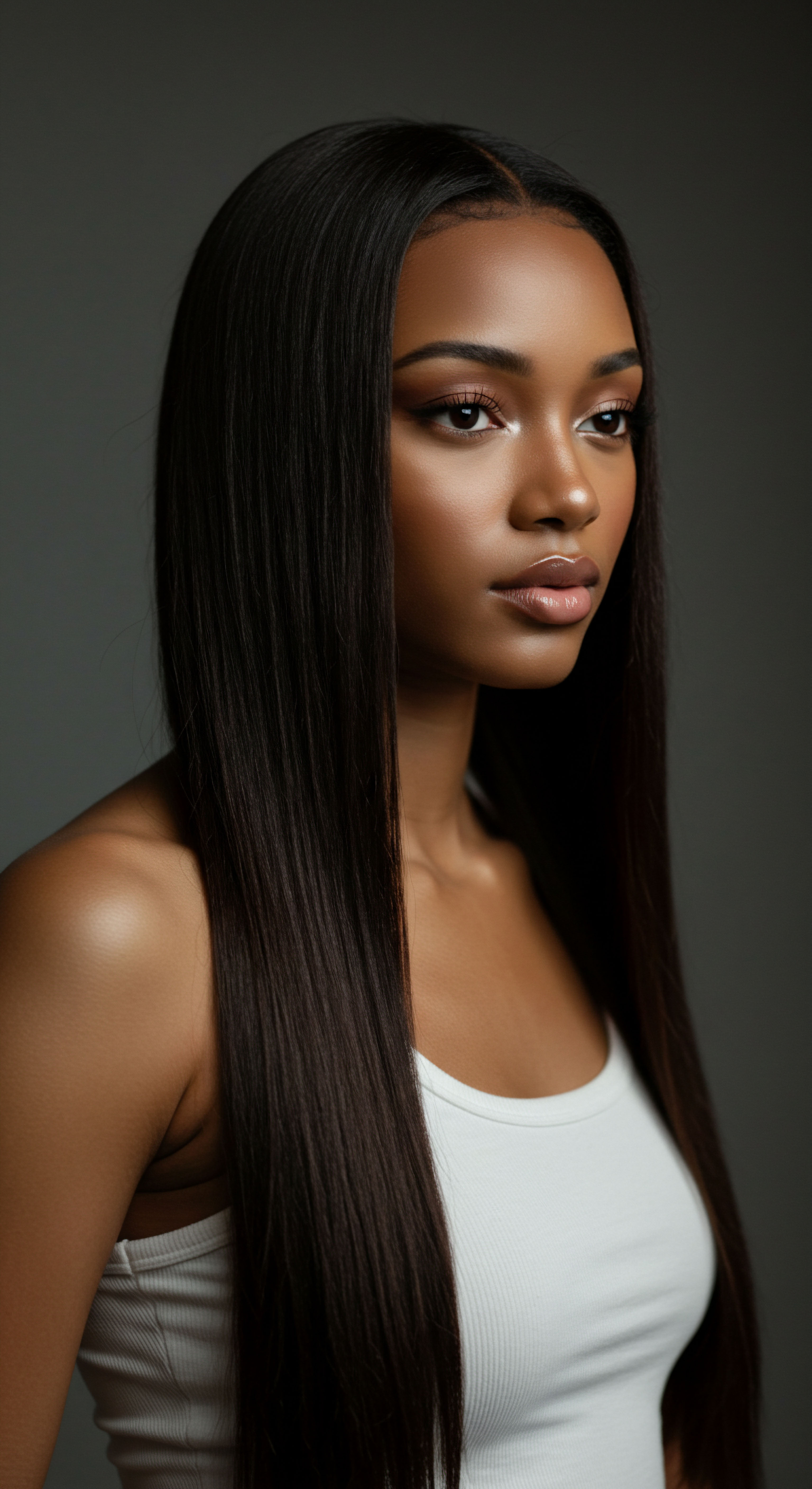
References
- Leow, S. H. & Tan, L. K. (2021). Environmental impact of hair extensions. Journal of Environmental Science and Management, 1(1), 45-58.
- Mohanty, L. (2020). Hair and Identity ❉ A Sociological Study of Hair Practices. Routledge.
- Roberts, L. (2018). The Cultural History of Hair. Berg Publishers.
- Singh, A. (2019). Hair ❉ A Cultural History. Bloomsbury Academic.
- Smith, J. P. (2022). The Psychology of Appearance ❉ How Hair Influences Self-Esteem. Academic Press.
- Thompson, R. (2017). Hair in African Cultures ❉ Symbolism and Significance. University of Chicago Press.
- Walker, C. (2021). The Global Hair Industry ❉ Economics and Ethics. Cambridge University Press.
- Williams, S. (2016). Protective Hairstyles and Hair Health ❉ A Dermatological Perspective. Journal of Ethnic Hair Studies, 4(2), 89-102.